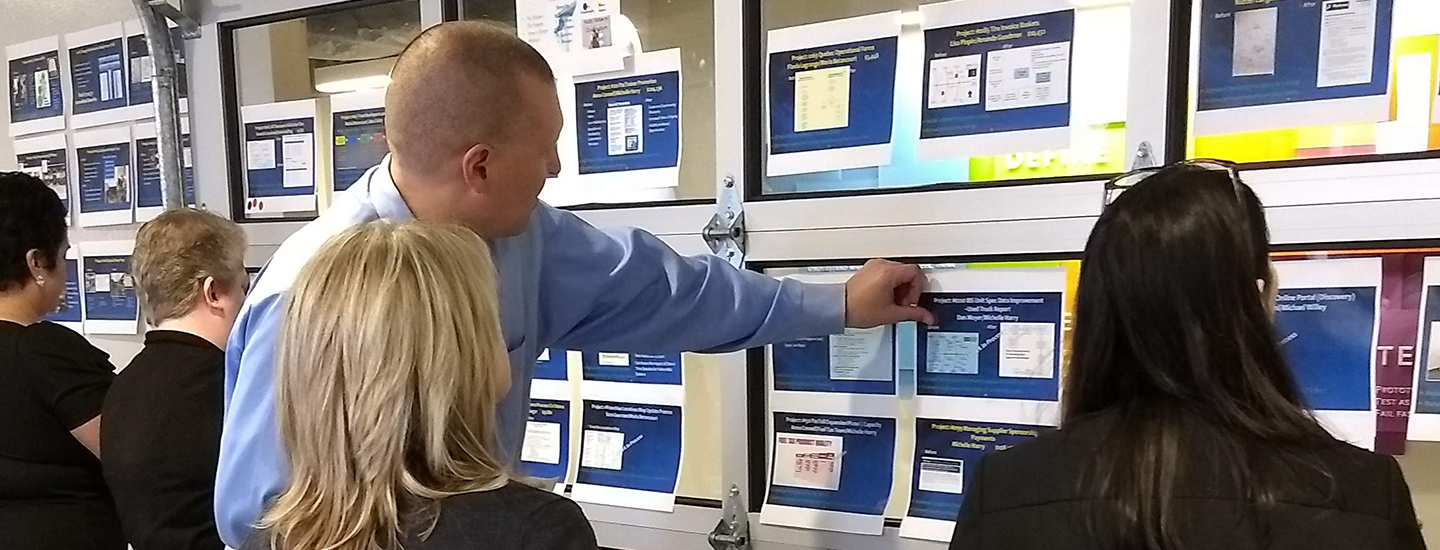March 12, 2019

Superior Quality through Continuous Improvement
By Sally Rosamond, PacLease Six Sigma Black Belt
Quality. That’s the first word PACCAR uses to describe its products, services, and processes. The main tool PACCAR utilizes to accomplish this superior quality is Six Sigma, its continuous improvement program. PACCAR just celebrated the 20th anniversary of Six Sigma; so there is no better time to take a deep dive into PacLease’s drive for unsurpassed customer satisfaction, superior quality, and premium value through continuous improvement. As PacLease’s official Six Sigma Black Belt, I often run across franchise and branch managers who are very motivated to participate with us in our quality projects for improving processes across the network and strengthening the products and services we offer.
I recognize organizations might at times have trouble starting or sustaining a Six Sigma, or other type of Quality program, of their own. The most typical barriers are time and money resources, or the lack of employee enthusiasm for programs that do not directly relate to the struggles they experience in their jobs. Whether the reasons you have not yet implemented a quality program are because of resources or relevancy, I have a proposal for you. Try Continuous Improvement (C-I) first. For pennies, you can turn those everyday struggles into your quality program and your employees into your quality professionals.
So what is C-I? It is a practice of improvement that addresses everyday issues and builds on incremental changes to the process. It follows a pattern of another acronym: PDCA, or Plan, Do, Check, Act. This is a guiding pattern for teams that allows focus on each piece of the process improvement that is being attempted. Planning is understanding the process using tools such as procedures, process maps, root cause discussions and assumption fact-checking. Armed with what they learn about the process, team members become brainstorming innovators. “Do” is trying out the team’s proposed fixes and improvements, and “Check” is seeing if it worked or not. Measuring is important to getting to know how the process is running, but it is especially important in the “Check” stage of the cycle. Knowing how fast, how long, how accurate a process is allows you to set the next improvement goal as well. Finally, the “Act” stage in the PDCA cycle is the final implementation of the tried-out improvement and the cycle begins again with an improved process to build upon!

C-I, like any quality endeavor, is not a fix-all method. But it does lead to more complex disciplines. It is a LEAN way of thinking in the Six Sigma discipline. It is also accessible to all levels of your organization at a very low entry cost. Materials are sticky notes, whiteboards, spreadsheets, team meetings and task lists; all of which are readily at-hand and likely in-use at your shop already. Sending one or two employees to Six Sigma training in the industry gets you a starter-set of C-I tools and techniques that can be deployed across your organization.
C-I can be for everyone. One of the things you’ll find in industry training programs is that big organizations use C-I as much as they do the more complex quality management methodologies. PACCAR Inc has its own training program, available to all employees, suppliers and dealerships, that promotes standardization through the supply chain by teaching and sharing tools honed over the last 20 years of C-I excellence. Other examples of generic techniques and guiding principles for teams can be found in such on-line forums and organizations, such as American Society of Quality ASQ or LEAN Institute.
PacLease is proud to have a quality program that is very much rooted in employee-led problem solving and using the PDCA cycle to initiate quality projects. These include eliminating printing waste, shortening the cycle time to perform a standard PM (preventative maintenance) appointment, eliminating unnecessary mailing costs and reducing over ½ the steps in a parts put away process. C-I has helped us to “eat the elephant” by measuring performance, improving it incrementally and setting new improvement targets as we gained insight about the process. We have larger initiatives that have built on discoveries made in our C-I projects such as a project to increase the number of customers participating in revenue generating service programs and another that aims to cut service costs in half.

C-I might start small but soon turns into those big cost reduction, revenue generating projects you originally wished you had a quality program for. C-I methods metaphorically lower the water so you can see the rocks. This is a lower entry cost practice which results in process efficiencies, higher quality engagement, and increased time savings.
What process can you improve today?
